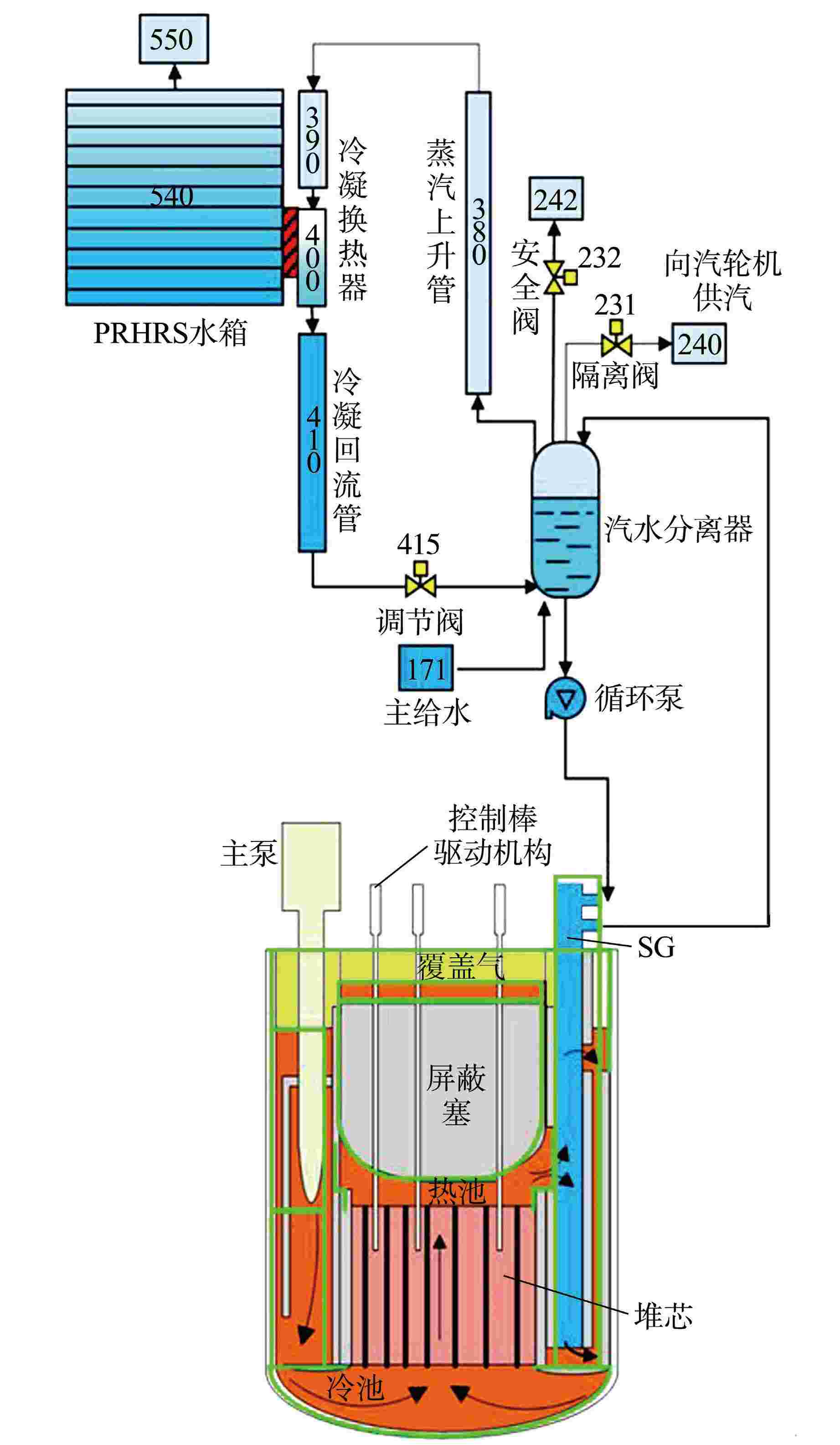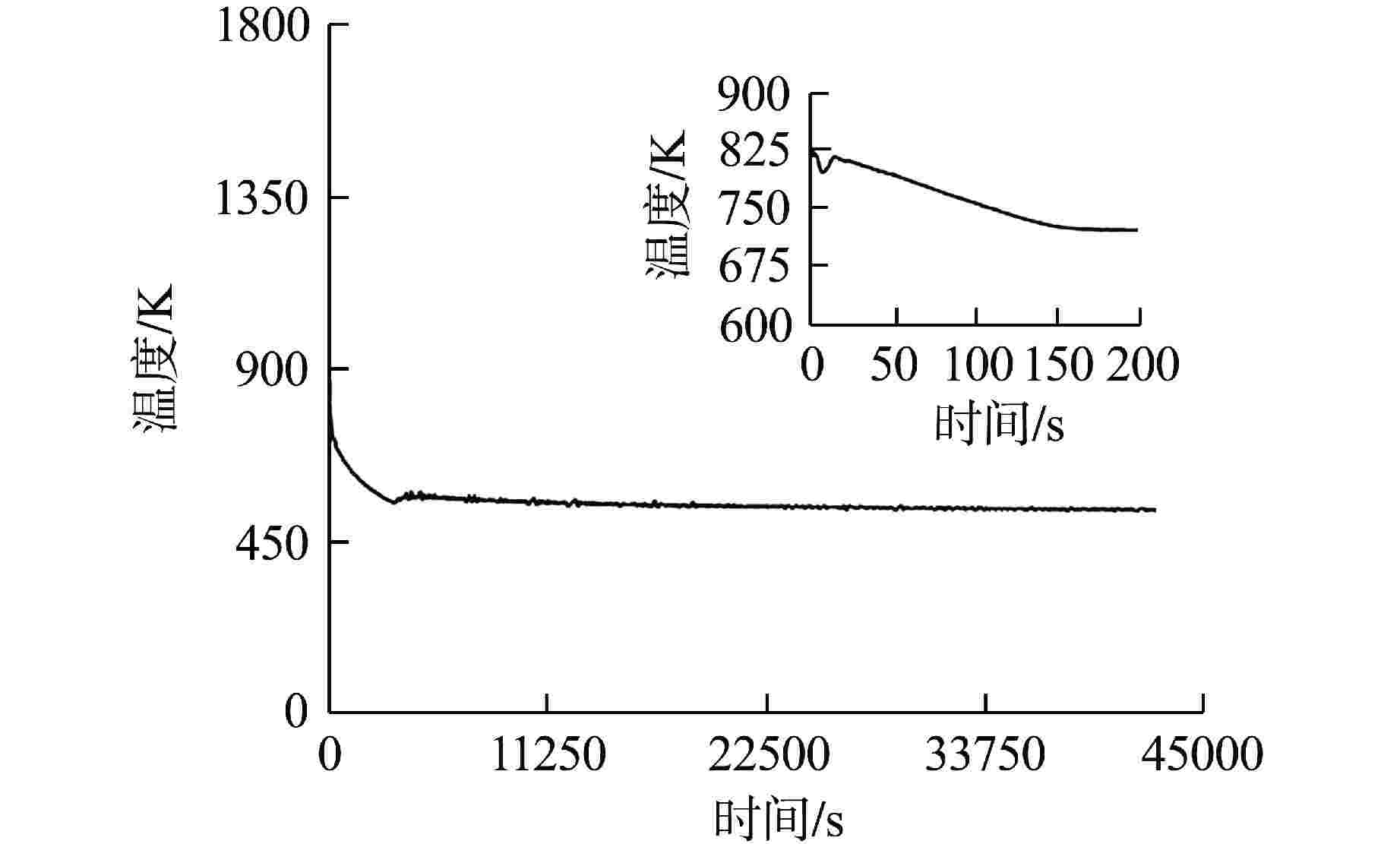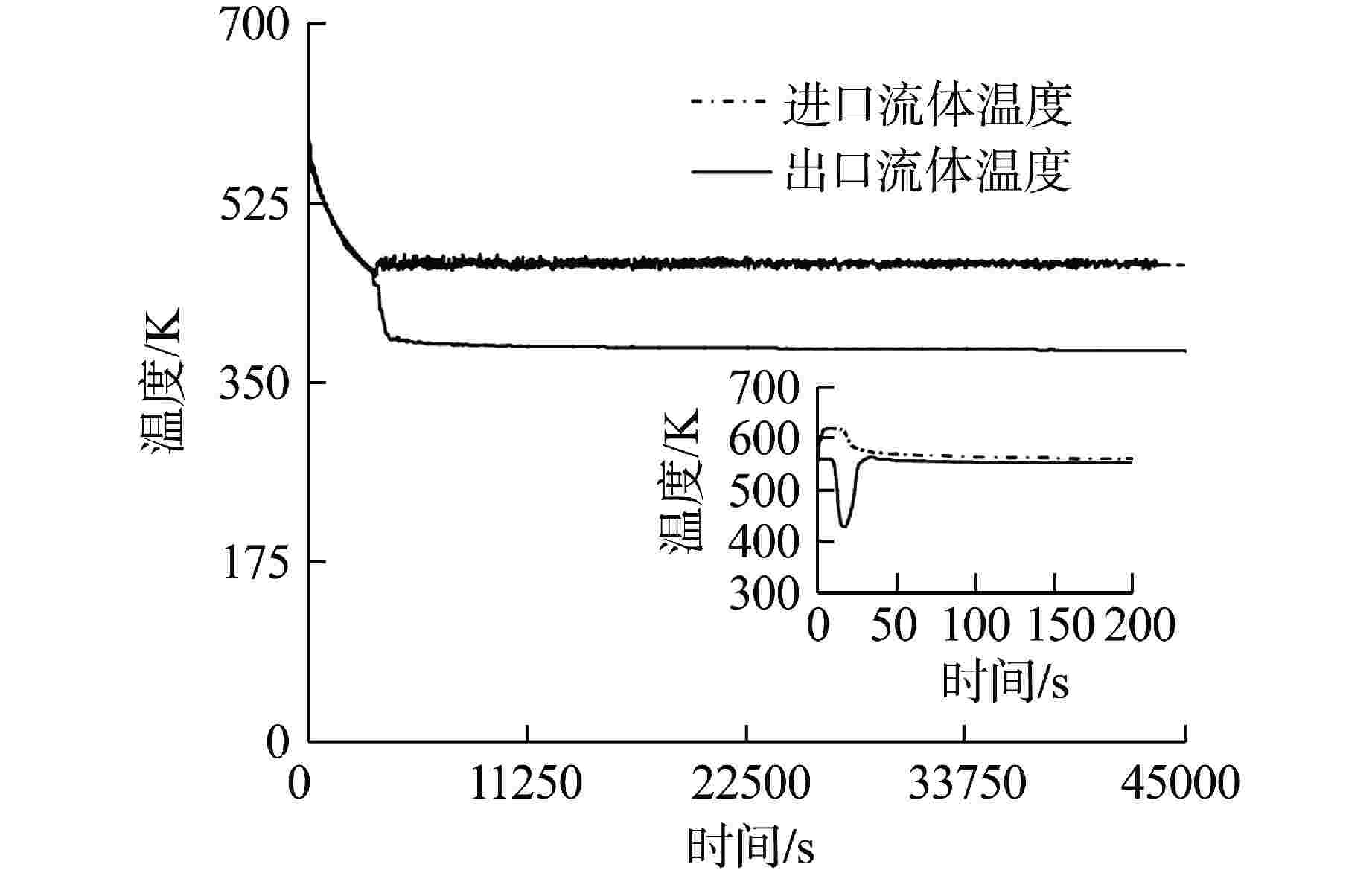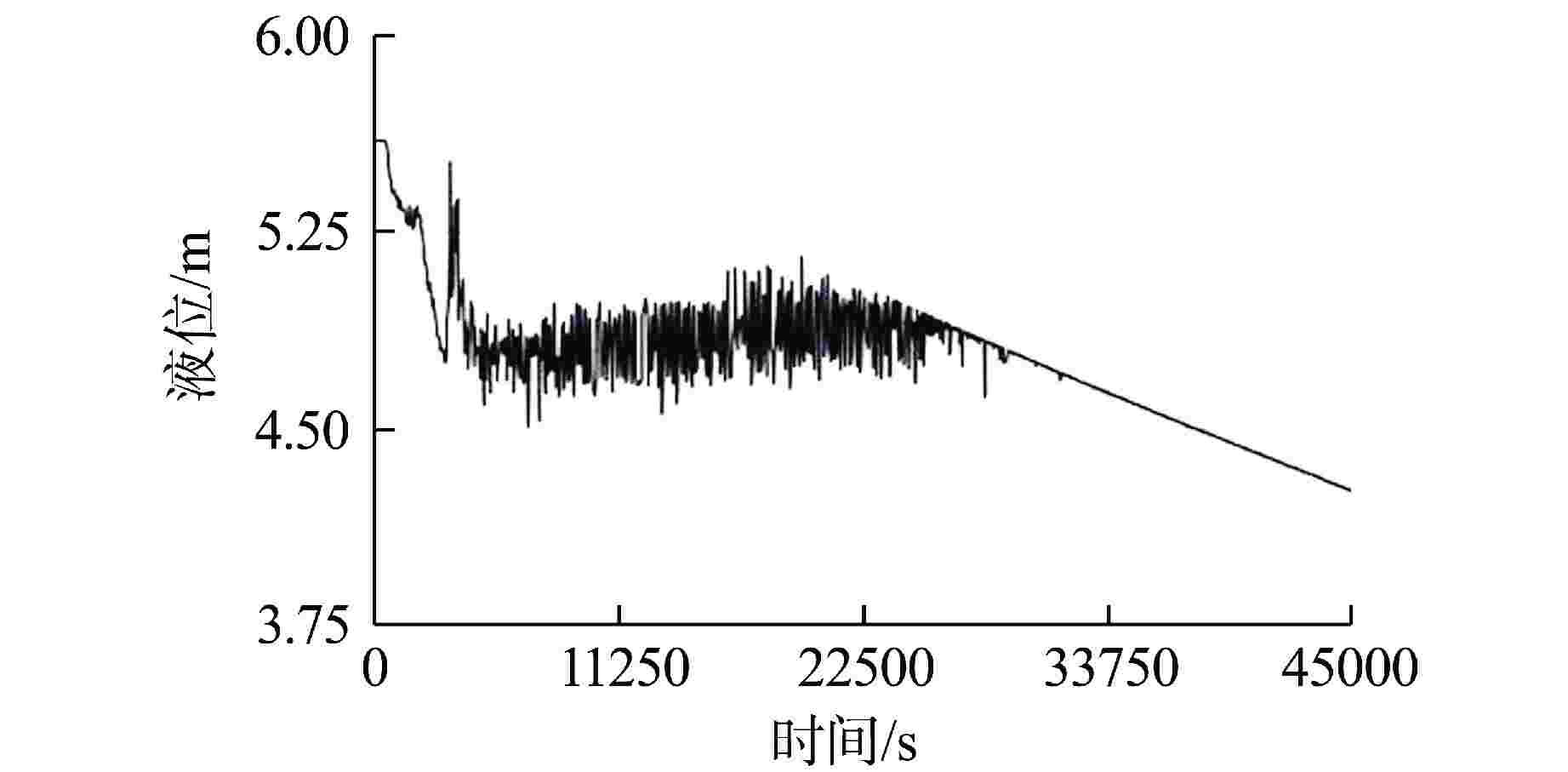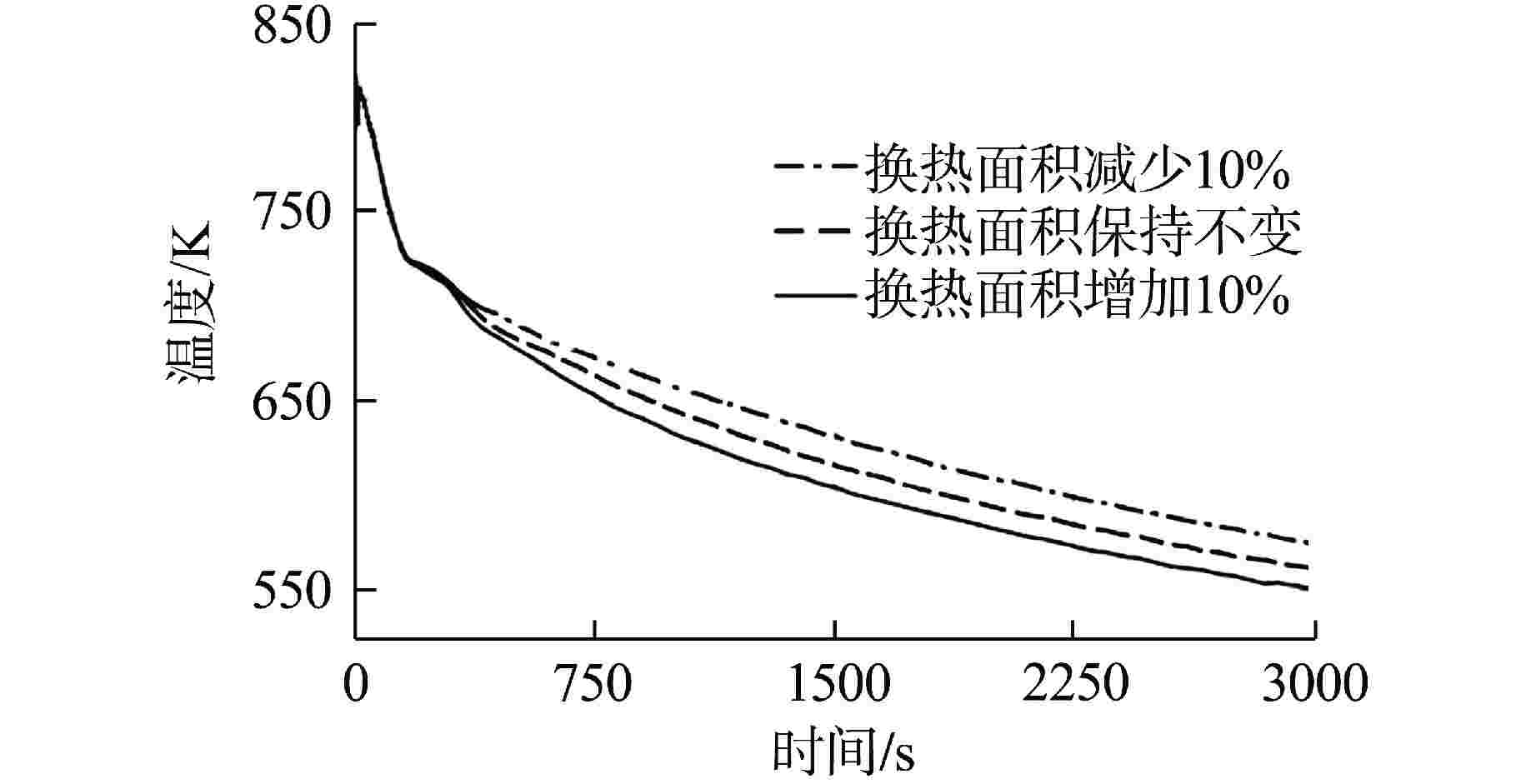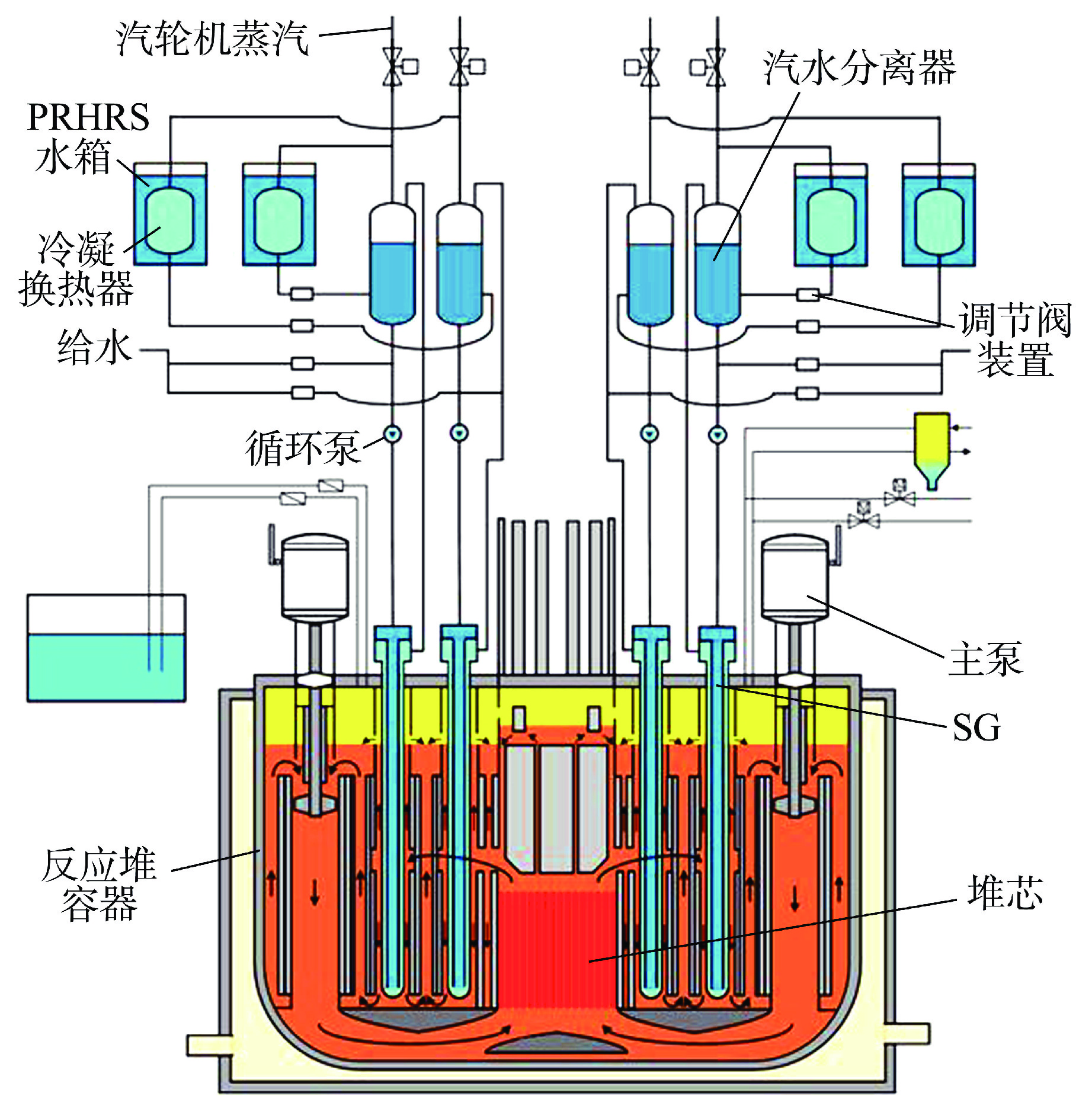Research on Characteristics of Secondary Side Passive Residual Heat Removal System of Lead-bismuth Reactor under SBO
-
摘要: 以俄罗斯SVBR-100铅铋堆二次侧非能动余热排出系统(PRHRS)为研究对象,采用RELAP5/MOD4.0程序建模开展全厂断电(SBO)事故下PRHRS的余热排出能力评价和参数敏感性分析。研究结果表明,在整个SBO事故中,关键参数燃料包壳峰值温度最高为816.35 K,未超过安全限值,PRHRS能够及时导出堆芯余热;通过增大PRHRS水箱内置冷凝换热器换热面积可以增强PRHRS的余热排出能力。本研究建立的铅铋堆二次侧PRHRS安全分析模型和评价方法,可为我国铅铋堆PRHRS的设计和应用提供技术参考。
-
关键词:
- 铅铋堆 /
- 非能动余热排出系统(PRHRS) /
- 全厂断电(SBO)事故 /
- RELAP5/MOD4.0
Abstract: The secondary side passive residual heat removal (PRHRS) of Russian SVBR-100 lead-bismuth reactor was chosen as the research object, and the RELAP5/MOD4.0 code was used to model and evaluate the heat removal capacity and parameter sensitivity of PRHRS under station blackout (SBO) accident. The results show that the key parameter of the peak cladding temperature is 816.35 K during the whole SBO accident, which is within the safety limit. PRHRS can timely remove the residual heat. By increasing the heat exchange area of the built-in condensing heat exchanger in PRHRS water tank, the residual heat removal capacity of PRHRS can be enhanced. The safety analysis model and evaluation method for secondary side PRHRS established in this study can provide technical reference for the design and application of PRHRS of lead-cooled reactor in China. -
表 1 SBO事故后初始及假设条件
Table 1. Initial and Assumed Conditions after SBO Accident
编号 初始及假设条件 1 反应堆初始热功率取额定功率280 MW 2 一回路冷却剂流量取13590 kg/s 3 一回路堆芯冷却剂进口温度取609 K、出口温度取752 K 4 二回路蒸汽出口温度取560 K,绝对压力取7.0 MPa 5 假定事故后0 s时刻,触发反应堆停堆,同时主泵惰转,主给水及设备冷却水流量下降,主蒸汽隔离阀关闭 6 考虑停堆信号的延迟,假定延迟时间为1.0 s 7 二回路汽水分离器压力高于11 MPa时,安全释放阀打开 8 PRHRS水箱初始温度取313.15 K 9 假设汽水分离器中的压力超过1.2 MPa时,执行PRHRS投入使用的出口调节阀打开 表 2 SBO事故发生的时间序列
Table 2. Sequence of SBO Accident
事件 时间/s 全厂断电发生 0 一回路冷却剂主泵开始惰转 0 二回路主给水开始下降 0 二回路主蒸汽阀隔离 0 安全棒开始下落 1 二回路给水完全丧失 5 PRHRS阀门打开 6 安全棒完全下落 9 安全阀释放阀打开 12 PRHRS阀门完全打开 26 -
[1] 吴宜灿,王明煌,黄群英,等. 铅基反应堆研究现状与发展前景[J]. 核科学与工程,2015, 35(2): 213-221. [2] 刘玉康,文青龙,乔鹏瑞,等. 全厂断电事故工况下小型铅铋快堆余热排出能力评价[J]. 原子能科学技术,2021, 55(11): 2028-2035. [3] 陈学锋. 核电厂全厂断电事故分析[J]. 中国核电,2011, 4(1): 46-51. [4] 盛美玲,金鸣,柏云清,等. 中国铅合金冷却研究堆事故余热排出系统概念设计与分析[J]. 核科学与工程,2014, 34(1): 91-96. [5] 夏少雄,王家群,潘晓磊,等. 中国铅基研究堆非能动余热排出系统可靠性分析[J]. 核技术,2015, 38(2): 020605. [6] International Atomic Energy Agency. Advances in small modular reactor technology developments: 20-02510E[R]. Vienna: IAEA, 2020. [7] 吴国伟. 铅基堆非能动余热排出系统的设计研究[D]. 合肥: 中国科学技术大学,2017. [8] European Seventh Framework Programme. Conceptual design of the DHR system of the ETDR (ALFRED): FP7-249668[R]. European Union, 2012. [9] GOLOVIN A O, SIVAK Z V, LEONCHUK M P. Analysis of safety aspects of the svbr-75/100 power installation as applied to regional nuclear cogeneration plant[J]. Dysnai, 2003: 101. [10] PETROCHENKO V, TOSHINSKY G, KOMLEV O. SVBR-100 nuclear technology as a possible option for developing countries[J]. World Journal of Nuclear Science and Technology, 2015, 5(3): 221-232. doi: 10.4236/wjnst.2015.53022 [11] International Atomic Energy Agency. Liquid metal coolants for fast reactors cooled by sodium, lead, and lead-bismuth eutectic: NP-T-1.6[R]. Vienna: IAEA, 2012. [12] MELONI P, WAGNER A D, CASTIGLIA F, et al. Investigation of Relap capability to simulate the LBE cooling system thermal-hydraulic[J]. Centro Ricerche Bologna, 2004, 1: 637-647. [13] 薛冰,刘晓晶,何兆忠. 10MW固态燃料熔盐堆热阱丧失事故安全分析[J]. 核科学与工程,2019, 39(6): 966-974. [14] 卢永刚. 铅铋冷却快堆主循环泵优化设计与可靠性分析[D]. 镇江: 江苏大学,2019. [15] 石康丽. 铅冷快堆始发事件及瞬态安全特性初步研究[D]. 合肥: 中国科学技术大学,2017. [16] TOSHINSKII G. Lead-bismuth cooled fast reactors[M]. Riga: LAMBERT Academic Publishing, 2017. -





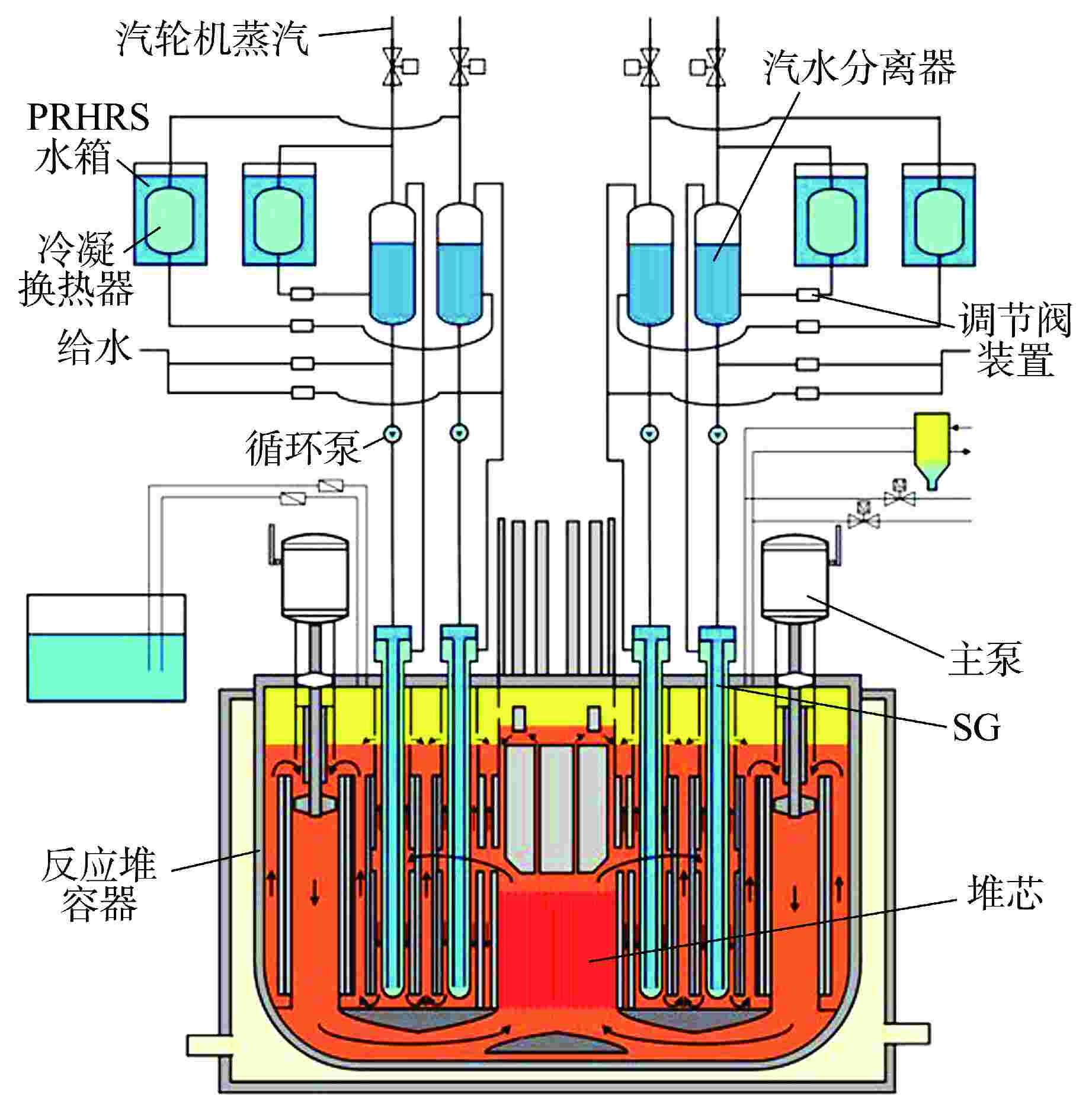
 下载:
下载:
